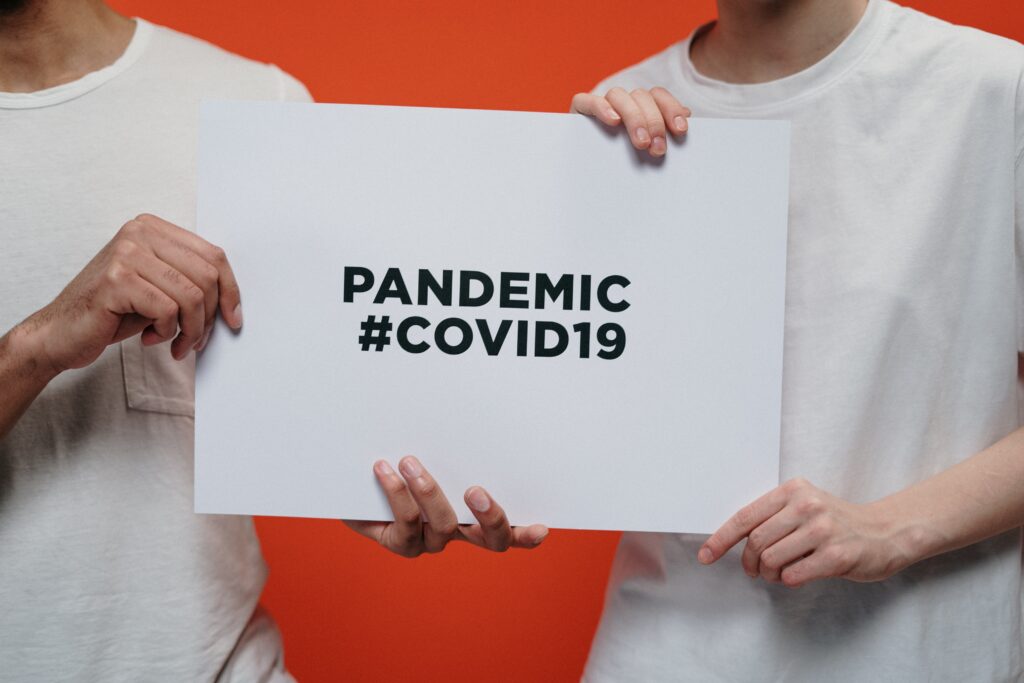We have more contraceptive options today than ever before, but with choice can come confusion, so let’s have a look at what is available.
I think of contraception in 5 categories-
- Barrier methods
- Hormonal methods – pills patches and rings
- Long-acting reversible methods
- Natural methods
- Emergency contraception
BARRIER METHODS
Male Condoms
Condoms are often the first form of contraception used by a couple. They are most commonly made of latex, but some people are allergic to latex and thankfully you can get alternatives made of substances like silicone or polyurethane.
They come in different sizes and it is important you use the right size for you – too small and it might split, too big and it could come off, both of which runs the risk of an unwanted pregnancy. Most erect penises are between 5.5 and 6.5 inches and a standard fit condom is designed for this size.
To be used properly, the condom should be held in place and the penis removed from the vagina after ejaculation but before the penis becomes flaccid again to ensure that no semen enters the vagina.
Female Condoms
The female condom is far less popular and is less effective than the male condom, but it does have the advantage that it can be inserted into the vagina anytime and doesn’t require the penis to be erect first. It does take some getting used to though and you need to be confident that you can fit it properly so that it doesn’t slip.
Diaphragms and Caps
Diaphragms and caps are dome shaped and designed to fit over the cervix preventing sperm from getting into the womb. They are used with spermicide. They come in different sizes. If you choose this form of contraception you will need to see a GP or nurse at your GP surgery or a Family Planning Clinic so that they can advise on the best size for you and teach you how to fit it for yourself. To be used properly, a diaphragm or cap can be out in place anytime up to three hours before intercourse, but it must stay in place for at least six hours after sex.
HORMONAL METHODS
The Combined Oral Contraceptive Pill (COCP)
This is one of the most commonly used contraceptive methods – in fact it is thought that around one in four women use this method. As it’s name implies it is a combination pill containing two hormones – oestrogen and progestogen. It works by preventing ovulation, thickening cervical mucus and thinning the lining of the womb. It is the thinning that explains why many women find the bleeding they experience using the COCP is lighter than their normal period. It should be taken at the same time every day, but actually there is a 12 hour window, so if you miss pill and remember within 12 hours you simply take the missed pill and then continue taking the rest of the packet at the same time each day. The COCP should be taken every day for 3 weeks and then you take a break for a week when you will experience a “withdrawal bleed”. It is important that the next pack is started exactly a week later. Some brands of COCP contain 28 pills in strip with the last 7 pills in the pack being “dummy pills” so that you continue to take a pill every day. If you are someone who might forget, then this might be a good option for you. You can also run one pack of 21 straight into another so that you miss that withdrawal bleed if your bleed is due over a holiday or special event.
Lots of women worry that they may gain weight taking the combined pill, but research has shown this is not the case.
The pill can cause a rise in blood pressure. There is a very small increased risk of blood clots and this is mostly in women with a family history of blood clots, smokers, the very inactive or if you are very overweight.
You should not take the combined pill if you:
- Are significantly obese (body mass index greater than 35)
- Have high blood pressure
- Have a history of blood clots
- Have migraine with aura
- Have blood disorders that make you more prone to clotting
- Are breast feeding
- Have breast or liver cancer
- Have disease of the gallbladder
- Have a condition called SLE
The Mini Pill (progesterone only pill – POP)
This type of pill is taken every day without a break and works by thickening cervical mucus and thinning the lining of the womb. Most mini pills need to be taken within a three-hour window of the same time every day. Cerazette is a form of mini pill that also prevents ovulation and like the combined pill has a twelve hour window so may be more appropriate for you if you schedule is very changeable. Your bleeding may be less predictable on the mini pill and some women find their periods stop altogether.
The Contraceptive Patch
The contraceptive patch is basically the combined pill in patch form which is changed on the same day each week. The patch is about 5cm square. Some women find it can cause some skin irritation, but you can minimise this by rotating the site you use each week. The same rules as the COCP apply regarding who this form of contraception is not suitable for.
The Contraceptive Ring
This is a small clear ring about 5 cm in diameter containing the same hormones as the COCP, so the same rules apply, but as this stays in place for three weeks at a time, women who find taking a pill every day a hassle, may prefer this option.
LONG-ACTING REVERSIBLE CONTRACEPTIVES
I think of these as the “set and forget” contraceptives because once in place you don’t need to think about contraception for weeks and in some cases years. They include:
Injections
Contraceptive injections contain progestogen are given every two or three months depending on the type. The most commonly used injection is given every 12 weeks and if you are more than a week late, you may be asked to do a pregnancy test to confirm that you are not pregnant before the next injection. This form of contraception can sometimes be associated with weight gain particularly in younger women (under 18) who are already overweight. Irregular bleeding can be an issue especially when the injection is first used.
It is also possible to get side effects from the hormone, which include acne, hair loss, mood swings, loss of libido and headaches.
Long term it is possible that the injection can affect your oestrogen levels and put you at risk of osteoporosis (brittle bones). If you have other risk factors for this disease such as low weight, excess alcohol intake, a positive family history, long term use of steroids, cigarette smoking or thyroid disease, then your doctor may suggest an alternative form of contraception.
There is no long-term risk to fertility but there can be a delay of up to a year when coming off the injection before periods start again and fertility is completely back to normal.
The Contraceptive Implant
This is small rod the size of a matchstick that is inserted under the skin of the arm under local anaesthetic. It slowly releases progestogen over a three-year period giving you effective contraception for all that time until it needs to be removed and replaced (again under local anaesthetic).
Intrauterine Devices (Coils or IUDs)
I am a bit sad about the term “coil”, as I think it puts some women off. The truth is, when I show women coils, they are always surprised by how small they are. They are made of plastic or copper and can be fitted by Family Planning Clinics and some GP practices. There are lots of different types available, some of which will last for 10 years before needing to be replaced.
Some women find their periods are heavier with an IUD but some of this may also be because a lot of women go from using the COCP (where periods are lighter) to an IUD so we are not always comparing like with like.
They can also be used for emergency contraception (see below), in which case they can stay in place and be used as longer-term contraception.
The Intrauterine System (IIUS)
This is like a coil only it contains progestogen which is slowly released into the lining of the womb. It is fitted in the same as a coil but it is slightly larger, so if you have never had children, they may use local anaesthetic to fit it. The total hormone absorbed into the body is similar to taking two mini pills in a week, so hormonal side effects are much less likely. It can cause erratic spotting for three to six months but after this a lot of women find their periods stop altogether. It needs replacing every three or five years depending on which brand you have fitted.
NATURAL CONTRACEPTION
NATURAL CONTRACEPTION
Natural contraception requires you to be very in tune with your body and to be prepared to abstain from sex on your fertile days which can be as many as nine days a month.
The signs you need to look for are:
- Body temperature – if you record your body temperature before you get out of bed each day and before you have anything to eat or drink, you will notice that at the time of ovulation your temperature will rise very slightly, about 0.2 degrees centigrade. This is when you are fertile. Your fertile time ends when your temperature has been higher for three days in a row.
- Cervical secretions – cervical secretions become clearer and wetter just before ovulation, a bit like the consistency of raw egg white. This is your fertile time. After ovulation the secretions become thicker and sticky. When they have been like this for three days you are no longer in your fertile phase.
- Cervical changes – Your cervix will feel slightly higher in the vagina and become softer and slightly open around the time of ovulation, which indicates your fertile time.
EMERGENCY CONTRACEPTION
You can access free emergency contraception from Family Planning Clinics, GP surgeries, Sexual Health Clinics, Walk-in Centres, Minor Injuries Units, A&E and pharmacies although not all of these will offer the IUD option.
The Emergency Contraceptive Pill (“Morning After Pill)
There are two types of emergency contraceptive pill. Levonelle can be used any time up to three days after unprotected sex and EllaOne can be used up to five days after unprotected sex.
The IUD
The IUD can be inserted up to five days after unprotected sex.
If you are still struggling to decide what contraception to use then speak to your GP. The Brook Contraception Tool can also help you work out the best method for you.






